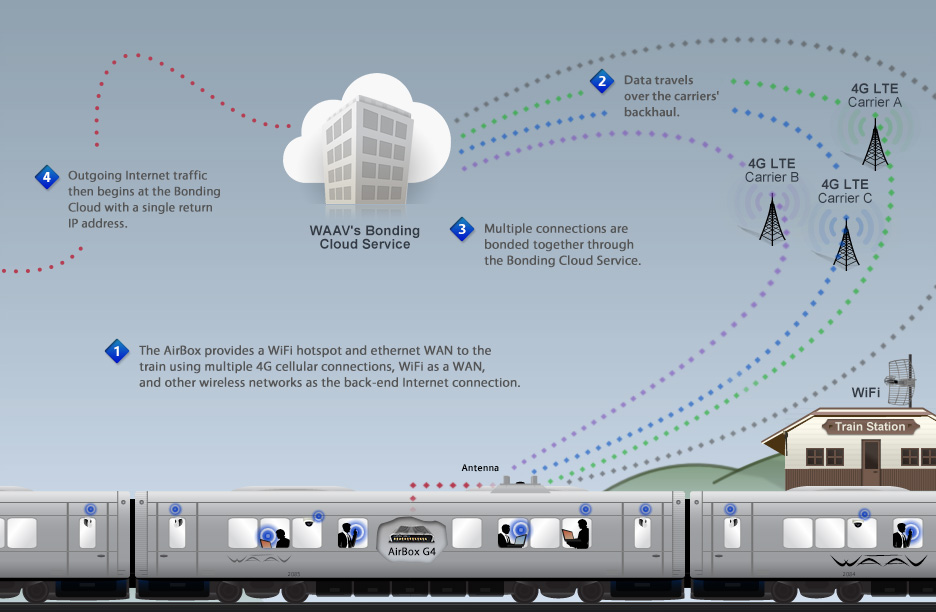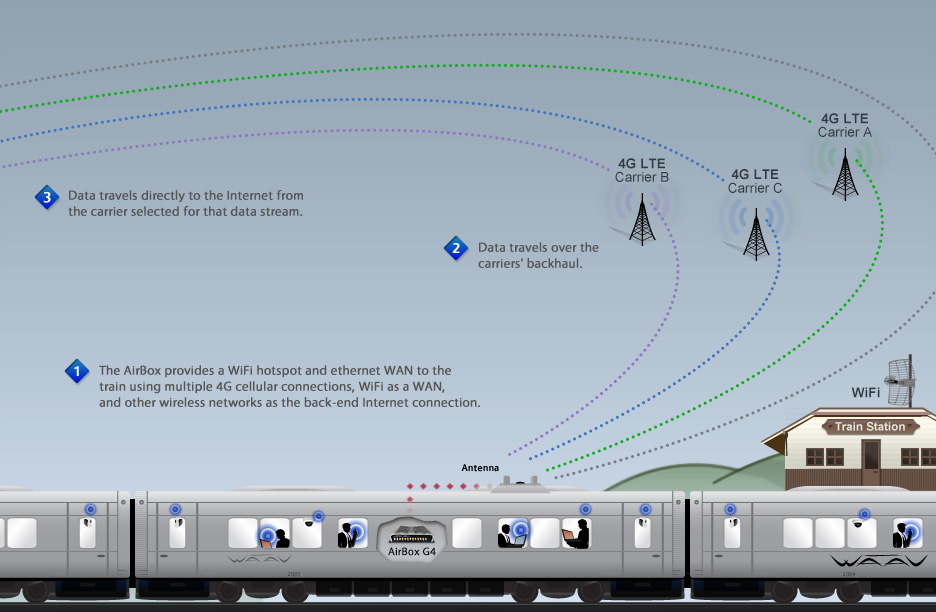
- - Full aggregation of multiple WANs
- - Seamless switching of carriers'
- - Encrypted traffic
- - Cloud based termination point
- - Seamless to any application
Bonding overview
Cellular Bonding combines multiple 3G/4G/5G cellular connections, and other Internet connections, into one single virtual connection. The virtual connection behaves like a single connection with a single IP address, but it is using multiple routes to the Internet to increase bandwidth and offer redundancy. All the connections go through the Bonding Cloud service as a termination point. This Bonding Cloud service is located on an Internet backbone for reduced latency.

Bandwidth aggregation
Bonding is used to take advantage of the available bandwidth of all underlying connections and aggregate them together for a single stream. This means that the data stream will get close to the bandwidth of all the carriers available, with a small amount of overhead. Bonding aggregates both downlink and uplink data streams. Cellular Bonding constantly adapts to the available bandwidth from each carrier and makes it available to any user's application.
Seamless carrier switching
Cellular bonding seamlessly adapts to underlying links going into low signal areas or going completely down, traffic continues to route over the other good connections. When the connections are reestablished they are used again. There is no interruption to the user's application. This even works for "hard handoffs" meaning when the IP address changes on the underlying carrier. The user's application will continue to work as long as one of the carriers is able to pass traffic.
Connection persistence
In the event that one of the carrier connections is not able to pass traffic. That connection is taken out of service while the modem is reset. Once the connection is good again, it is put back into service. This is seamless to the client's application and done "behind the scenes".
Load balancing
Load balancing is another multinetwork technology. Load Balancing works by balancing Internet traffic over multiple 3G/4G/5G cellular connections. Load balancing can provide additional bandwidth or backup redundancy. Session Load Balancing assigns each session (TCP or UDP) to one of the cellular connections. All active connections are used simultaneously, and each has its own IP address. If one of the connections drops, all traffic is sent over the remaining connections. When the connection returns, traffic will be put back on that connection.

